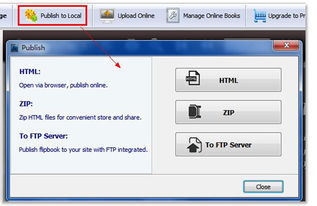Choosing the Right Product
 When it comes to selling products online, selecting the right item is crucial. The product you choose should not only be profitable but also have a market demand. Here are some factors to consider when choosing a product to sell online:
When it comes to selling products online, selecting the right item is crucial. The product you choose should not only be profitable but also have a market demand. Here are some factors to consider when choosing a product to sell online:
1. Market Research
Before diving into the world of online selling, it’s essential to conduct thorough market research. Use tools like Google Trends, Amazon Best Sellers, and eBay Pulse to identify trending products. Look for items that have a high search volume and low competition.
2. Profit Margins
Consider the profit margins of the product you’re interested in. Some products may have a high demand but low profit margins, while others may have lower demand but higher profit margins. Aim for a balance between demand and profitability.
3. Supply Chain
Ensure that you have a reliable supply chain for your chosen product. Look for suppliers who offer competitive pricing, fast shipping, and excellent customer service. A strong supply chain is crucial for maintaining inventory and meeting customer expectations.
Top Products to Sell Online
 Now that you know what to consider when choosing a product, here are some popular items that have proven to be successful for online sellers:
Now that you know what to consider when choosing a product, here are some popular items that have proven to be successful for online sellers:
1. Electronics
Electronics, such as smartphones, tablets, and smart home devices, are always in demand. These products often have high profit margins and can be sold on various platforms, including Amazon, eBay, and your own e-commerce store.
2. Health and Beauty Products
Health and beauty products, such as skincare, hair care, and supplements, are popular among consumers. These items can be sold on platforms like Amazon, eBay, and Etsy, where customers are looking for unique and high-quality products.
3. Fashion and Clothing
Fashion and clothing items, such as trendy apparel, accessories, and shoes, are always in demand. Look for niche markets or unique items that can set your store apart from the competition.
4. Home and Garden Products
Home and garden products, such as decor, furniture, and gardening tools, are popular among consumers looking to improve their living spaces. These items can be sold on platforms like Amazon, eBay, and Etsy.
How to Source Products
 Once you’ve identified the product you want to sell, it’s time to find a reliable supplier. Here are some methods for sourcing products:
Once you’ve identified the product you want to sell, it’s time to find a reliable supplier. Here are some methods for sourcing products:
1. Alibaba
Alibaba is a popular platform for finding suppliers from around the world. Use the platform’s search filters to find suppliers offering the product you’re interested in. Be sure to communicate with potential suppliers to ensure they meet your requirements.
2. Wholesale Markets
Attend local or international wholesale markets to find suppliers offering the products you want to sell. These markets can be a great way to network with suppliers and negotiate better prices.
3. Online MarketplacesMarketing Your Products
Once you have your product and supplier in place, it’s time to market your products to potential customers. Here are some effective marketing strategies:
1. Social Media
Leverage social media platforms like Facebook, Instagram, and Pinterest to promote your products. Use high-quality images and engaging content to attract followers and drive traffic to your online store.
2. Email Marketing
Create an email marketing campaign to keep your customers informed about new products, promotions, and discounts. Use email marketing tools like Mailchimp and Constant Contact to manage your campaigns.
3. Paid Advertising
Invest in paid advertising on platforms like Google Ads and Facebook Ads to reach a wider audience. Use targeted ads to reach potential customers who are interested in your products.
Customer Service
Providing excellent customer service is crucial for building a successful online business. Here are some tips for ensuring customer satisfaction:
1. Fast Shipping
Offer fast and reliable shipping options to keep your customers happy. Use suppliers who offer fast shipping and consider using fulfillment services like Amazon FBA or ShipBob.
2. Responsive Customer Support
Be responsive to customer inquiries and issues. Offer multiple channels for customer support, such as email, phone, and live chat.
3. Positive Reviews
Encourage satisfied customers to leave positive reviews on your online store and social media platforms. Positive reviews can help build trust and credibility with potential customers.By following these tips and strategies, you can increase your chances of success when selling products online. Remember to stay informed about market trends, adapt to changes, and always focus on providing the best possible customer experience.



